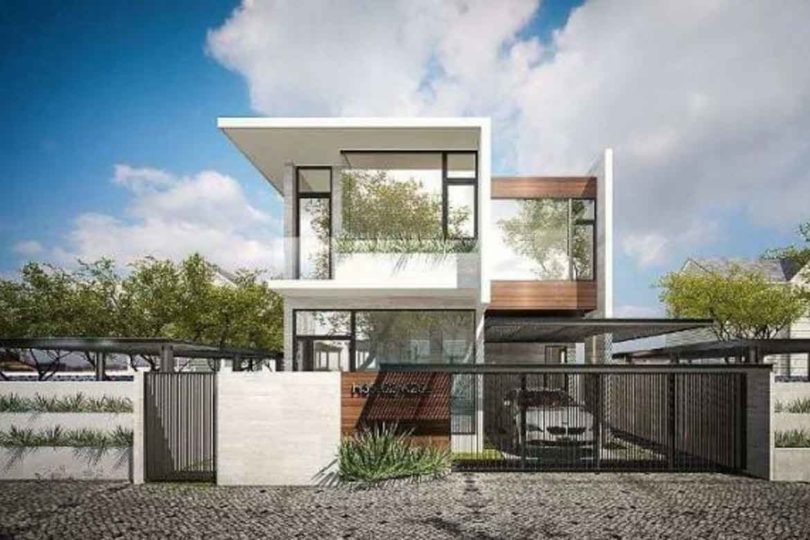What is Minimalist House Design?

Minimalist house design is an architectural and design approach that emphasizes simplicity, clarity, and functionality. It involves stripping away unnecessary elements, clutter, and ornamentation, leaving only the essential components that serve a purpose. This design philosophy is centered around the idea that less is more, and that simplicity is the ultimate form of sophistication. Minimalist homes often feature clean lines, monochromatic color schemes, and an abundance of natural light, creating a sense of calmness and serenity.
Key Elements of Minimalist House Design
Some of the key elements of minimalist house design include:
- Simple and Clean Lines: Minimalist homes often feature simple, unadorned lines and shapes, creating a sense of clarity and coherence.
- Monochromatic Color Scheme: A limited color palette is used to create a sense of visual harmony and balance.
- Natural Materials: Natural materials such as wood, stone, and plants are often used to add warmth and texture to the space.
- Abundant Natural Light: Large windows and skylights are used to flood the space with natural light, reducing the need for artificial lighting.
- Multi-Functional Spaces: Spaces are designed to serve multiple purposes, reducing the need for unnecessary rooms and clutter.
What are WELL-Certified Homes?
WELL-certified homes are designed and built with the health and well-being of their occupants in mind. The WELL Building Standard is a performance-based system that measures and certifies the health and wellness of buildings and homes. WELL-certified homes are designed to promote occupant health and well-being by providing a healthy and comfortable indoor environment, promoting physical activity, and supporting mental health and well-being.
Benefits of Minimalist House Design for WELL-Certified Homes
The benefits of minimalist house design for WELL-certified homes are numerous. Some of the key benefits include:
- Improved Indoor Air Quality: By reducing clutter and minimizing the use of synthetic materials, minimalist homes can improve indoor air quality, promoting healthier breathing and reducing the risk of respiratory problems.
- Increased Natural Light: Abundant natural light can boost mood, energy levels, and overall well-being, reducing the need for artificial lighting and promoting a healthy circadian rhythm.
- Reduced Stress: The calm and serene atmosphere of minimalist homes can help reduce stress and anxiety, promoting mental health and well-being.
- Promotes Physical Activity: Multi-functional spaces and open floor plans can encourage physical activity, such as yoga or stretching, promoting physical health and well-being.
- Sustainability: Minimalist homes often feature sustainable materials and energy-efficient systems, reducing the environmental impact of the home and promoting a healthier planet.
Integrating Minimalist House Design with WELL-Certified Homes
Integrating minimalist house design with WELL-certified homes requires careful planning and attention to detail. Some of the key considerations include:
- Natural Materials: Using natural materials such as wood, stone, and plants can add warmth and texture to the space while promoting indoor air quality and sustainability.
- Air Quality Monitoring: Installing air quality monitoring systems can help identify and address indoor air quality issues, promoting healthier breathing and reducing the risk of respiratory problems.
- Water Conservation: Installing low-flow showerheads and toilets can reduce water consumption, promoting water conservation and sustainability.
- Acoustic Comfort: Using sound-absorbing materials and designing spaces to minimize echo and reverberation can promote acoustic comfort and reduce stress.
- Mental Health: Incorporating elements such as natural light, plants, and calming colors can promote mental health and well-being, reducing stress and anxiety.
FAQ
- What is the main difference between minimalist house design and traditional house design?
The main difference between minimalist house design and traditional house design is the emphasis on simplicity, functionality, and sustainability. Minimalist homes are designed to be clutter-free, energy-efficient, and environmentally friendly, whereas traditional homes often prioritize aesthetics and luxury over functionality and sustainability. - How can I incorporate minimalist house design principles into my existing home?
You can incorporate minimalist house design principles into your existing home by decluttering and simplifying your space, using natural materials and light, and promoting multi-functional spaces. - What are the benefits of WELL-certified homes?
The benefits of WELL-certified homes include improved indoor air quality, increased natural light, reduced stress, promoted physical activity, and sustainability. - Can minimalist house design be applied to any style of home?
Yes, minimalist house design can be applied to any style of home, from modern to traditional. The key is to focus on simplicity, functionality, and sustainability, and to prioritize the health and well-being of the occupants. - How can I ensure that my minimalist home is also sustainable?
You can ensure that your minimalist home is also sustainable by using natural materials, energy-efficient systems, and environmentally friendly products, and by reducing waste and promoting recycling.
Conclusion
In conclusion, minimalist house design is a powerful tool for creating healthier and more sustainable living spaces. By combining the principles of minimalist house design with the WELL Building Standard, homeowners can create WELL-certified homes that promote occupant health and well-being while also reducing the environmental impact of the home. Whether you’re building a new home or renovating an existing one, incorporating minimalist house design principles and WELL-certified home features can have a significant impact on the health, happiness, and sustainability of your living space. By prioritizing simplicity, functionality, and sustainability, and by promoting indoor air quality, natural light, and physical activity, you can create a home that is not only beautiful and functional but also healthy and sustainable.
Closure
Thus, we hope this article has provided valuable insights into Minimalist house design for WELL-certified homes. We hope you find this article informative and beneficial. See you in our next article!